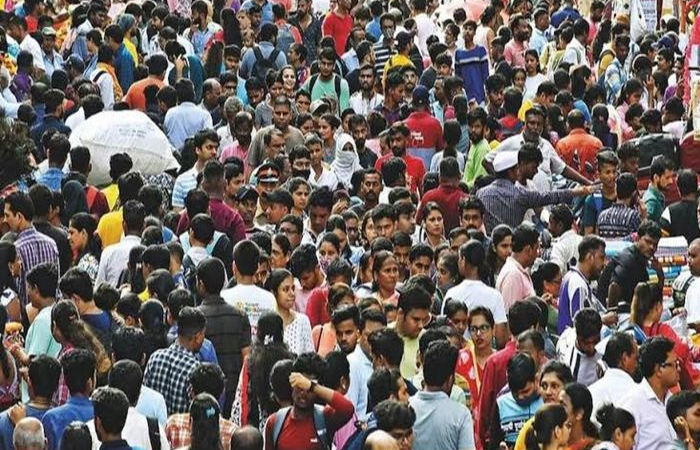
India Hindu Population: The Hindu population has declined by 8% in the last 65 years, while the Muslim population has increased from 9.84% to 14.09%. This information has been given in the report of the Prime Minister's Economic Advisory Council. The report titled 'Country-wide analysis of share of religious minorities' said that the population of all religious minorities in India, except Parsi and Jain communities, has grown by an overall of 6.58%.
The Hindu population has declined between 1950 and 2015 since the country's independence. The population of polygamous Hindus has declined by 7.82% between 1950 and 2015. Where an overall increase of 43.15% has been observed in the Muslim population. In this way Muslims have increased from 9.84% in 1950 to 14.09% of the population. The population share of Christians increased from 2.24% to 2.36%. Similarly, the population of Sikh community has increased from 1.24% to 1.85%.
How much population of which religion increased or decreased in 65 years?
The report said that the Hindu population in India was 84.68% in 1950, which declined to 78.06% by 2015. Meanwhile, the share of Muslim population increased from 9.84% in 1950 to 14.09% in 2015. Three years after independence, the Christian community was 2.24% of the country's population, which increased to 2.36% in 2015. In 1950, the population of the Sikh community was 1.24% in the country, which increased to 1.85% by 2015.
Meanwhile, the number of followers of Buddhism has also increased. Buddhist population participation has seen a significant increase, increasing from 0.05% in 1950 to 0.81% in 2015. Meanwhile, the Jain community's participation declined from 0.45% to 0.36%, while the Parsi population declined from 0.03% to 0.004%.
Who has prepared the report on the religious population of the country?
Information about the religious population of the country has been given in the report of the PM's Economic Advisory Council. The report was prepared by EAC-PM Member Shamika Ravi, EAC-PM Consultant Apoorva Kumar Mishra and EAC-PM Professional Abraham Jose. The report states that the country is getting a favorable environment for promoting social diversity.
Shamika Ravi says in her paper that for example, India is one of the few countries where there is a legal definition of minority. It provides constitutionally protected rights. The result of these progressive policies and inclusive institutions is seen in the increasing number of minority populations within India.
What is the condition of India's neighboring countries including Pakistan?
According to the report, India ranks second in terms of decline in minority population. The first number is from Myanmar. Where many populations have seen a 10% decline in the last 65 years. Regarding the Indian subcontinent, it has been said that Maldives is the only Muslim majority country where the Muslim population has declined. Multiple group participation in Maldives declined by 1.47%.
Multi-religious group participation in Bangladesh increased by 18%, the largest increase in the Indian subcontinent. The Muslim community in Bangladesh is diverse. Pakistan saw a 3.75% increase in participation from multiple religious sects and a 10% increase in the total Muslim population.
 look news india
look news india